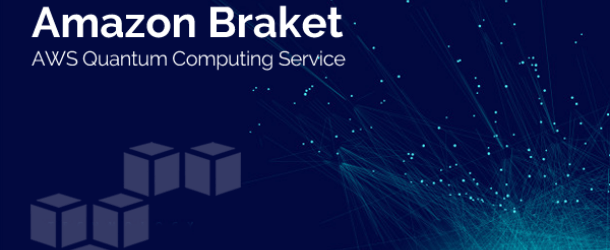AWS Building a Multi-Layered Quantum Service Free from Vendor-Specific Functionality, Access & Pricing

(NextPlatform) Amazon Web Services’ experiences building a multi-platform mega-platform for machine learning could carry forward for early quantum computing. The dual benefit for AWS with ML and now quantum is they can build a multi-tool foundation that is ready for an explosion of growth when it hits—one that is free from the vendor-specific negotiations of functionality, access, and pricing. And along the way, they get to evaluate every hardware and software vendor’s tooling, see inside each use case, and build their own profile of what the nascent quantum industry needs in advance.
Braket is AWS’s multi-layered quantum service, consisting of dedicated professional services teams to deep dive into specific applications, a research center oriented at Caltech, and Braket itself, which pulls together the hardware and software tools from a growing list of quantum computing vendors into a more cogent whole for easier access to and between quantum platforms and services.
The GM of AWS Braket service, Richard Moulds, pointed out in this interview. At the moment, we don’t see [quantum] as a business,” Moulds tells The Next Platform. “These machines cannot outpace classical systems today. There isn’t a commercial proposition for using these devices.” He says that what is definitely happening is fierce evaluation from both the makers of quantum devices and software but also companies trying to understand what they might need in a few years and who to hire to make it work.
At this stage, every quantum hardware maker has its own system, software stack, pricing, access policies, and limited experts for handling specific algorithms. More important, that growing handful of quantum systems vendors will be tasked with building sophisticated front ends that have all the security users will demand.
The challenges for users are ven more pressing. “We’ve heard from customers and software partners that all of this hard to navigate, all this wrestling with multiple services, different commercial models, different tooling. If they want to switch between annealers to gate, for instance, it’s all inconsistent. The message we got was we needed to deliver a consistent multi-technology platform around quantum computing that gets around all this jumping. We wanted to build a platform for quantum computing, not a showcase for a particular technology,” Moulds explains.
While AWS is working to standardize as much as they can, the devices themselves have too much variation to be fit nicely into instance-style boxes at this point. There is separate pricing by the minute for their managed simulator, D-Wave, Rigetti, and IonQ as well as per-task and per-shot.
The tooling and pricing are still evolving but if this continues to play out, and if AWS can capture the emerging quantum hardware makers, they’ve provided a platform to let early users “easily” test the different hardware platforms and switch more easily between them, something that is not possible today with relatively steep vendor-specific learning curves. IBM has its own cloud and is likely to go it alone.





















